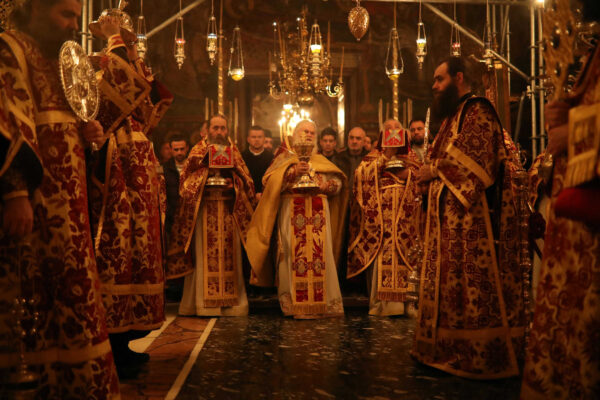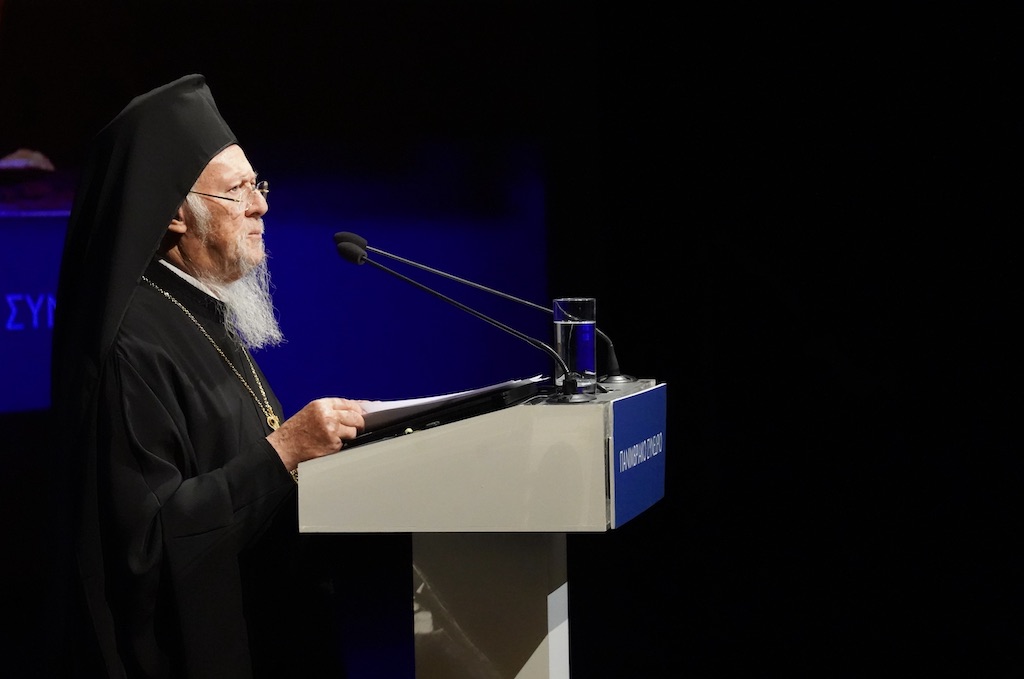The kondakion of Nativity is of divine inspiration – photo report from Nativity

During the reign of Emperor Anastasios I (491-518), a young deacon moved to Constantinople. He led an ascetic life of prayer and fasting, but in his humility he thought of himself as being rather worldly.
He was not at first considered to be either a talented reader or singer. He was, however, loved by the Patriarch of Constantinople because of his great humility. Once, around the year 518, while serving in the Church of the Panagia at Blachernae, during the All-Night Vigil for the Feast of the Nativity of Christ, he was assigned to read the kathisma verses from the Psalter. He read so poorly that another reader had to take his place. Some of the lesser clergy ridiculed him for this, and being humiliated he sat down in one of the choir stalls. Overcome by weariness and sorrow, he soon fell asleep.
As he slept, the Mother of God appeared to him with a scroll in her hand. She commanded him to eat the scroll, and as soon as he did so, he awoke. He immediately received a blessing from the Patriarch, mounted the ambo (pulpit), and chanted extemporaneously his famous Kontakion of the Nativity, “Today the Virgin gives birth to Him Who is above all being….”
The emperor, the patriarch, the clergy, and the entire congregation were amazed at both the profound theology of the hymn and his clear, sonorous voice as he sang. According to tradition, this was the very first kontakion ever sung. The Greek word “kontakion” (κοντάκιον) refers to the shaft on which a scroll is wound, hence the significance of the Theotokos’ command for him to swallow a scroll, indicating that his compositions were by divine inspiration.
His name? Saint Romanos the Melodist.
During his later life he composed thousands of kontakia (between 1000 and 8000). Below is the audio of the kontakion of the Nativity.
























































H αναδημοσίευση του παραπάνω άρθρου ή μέρους του επιτρέπεται μόνο αν αναφέρεται ως πηγή το ORTHODOXIANEWSAGENCY.GR με ενεργό σύνδεσμο στην εν λόγω καταχώρηση.
Ακολούθησε το ORTHODOXIANEWSAGENCY.gr στο Google News και μάθε πρώτος όλες τις ειδήσεις.


















